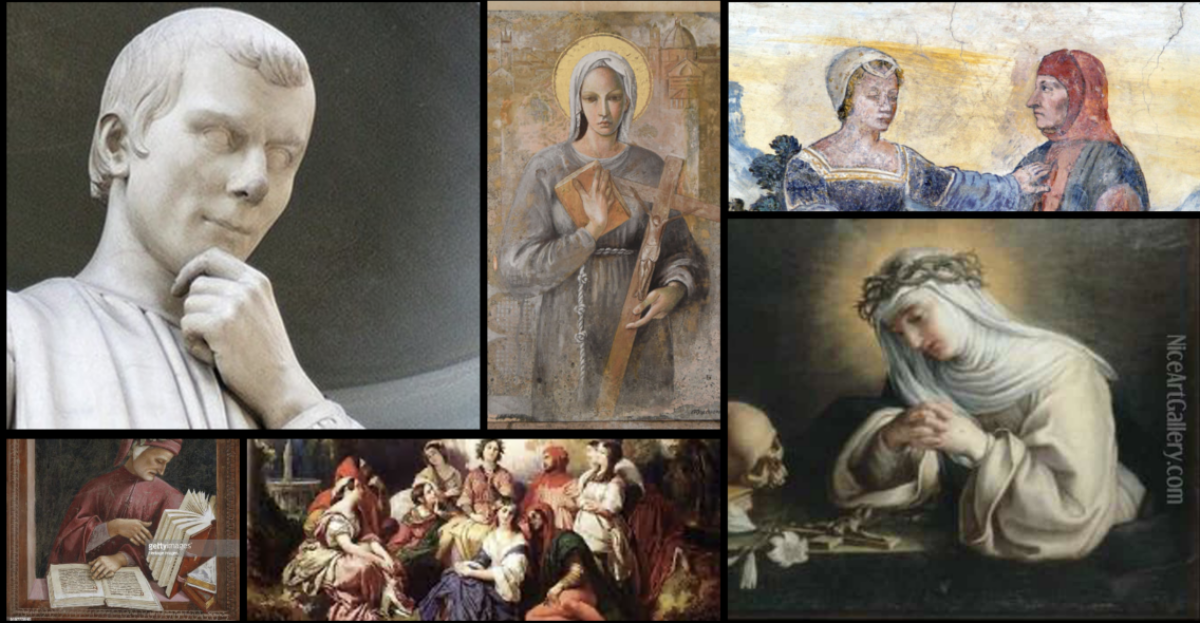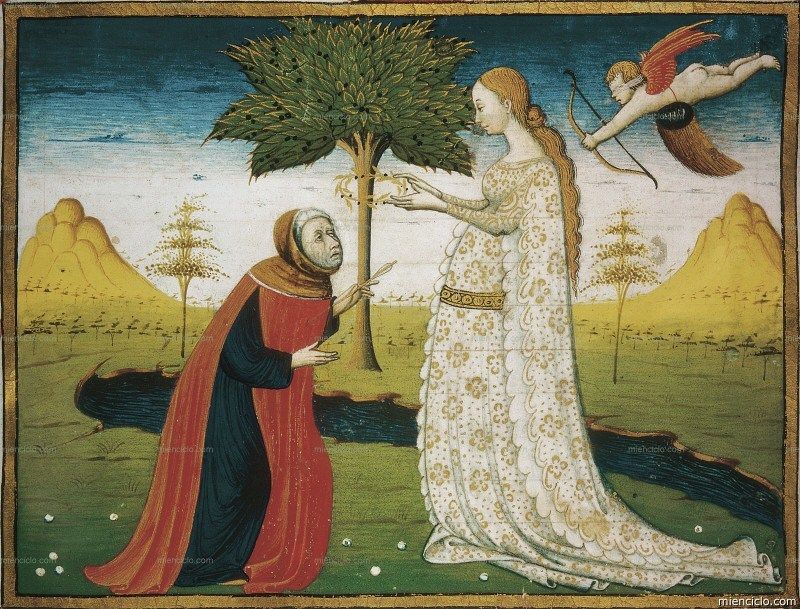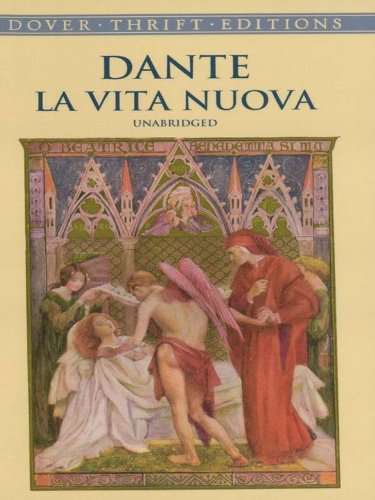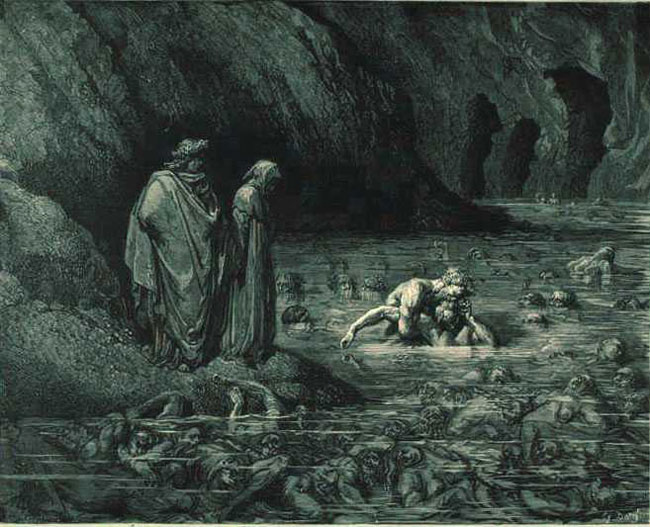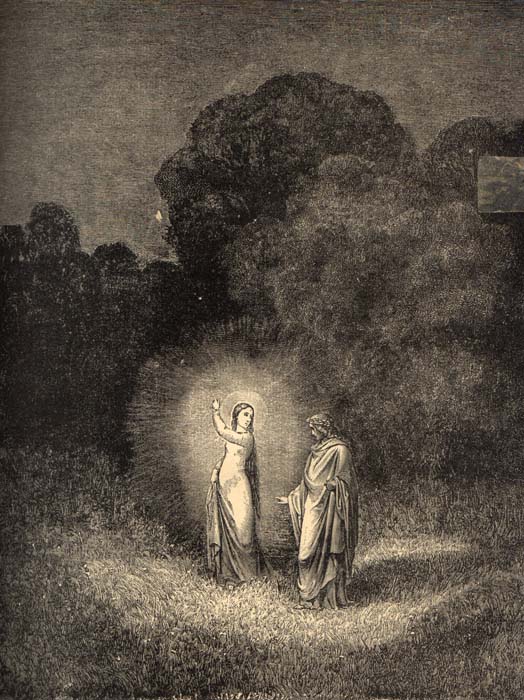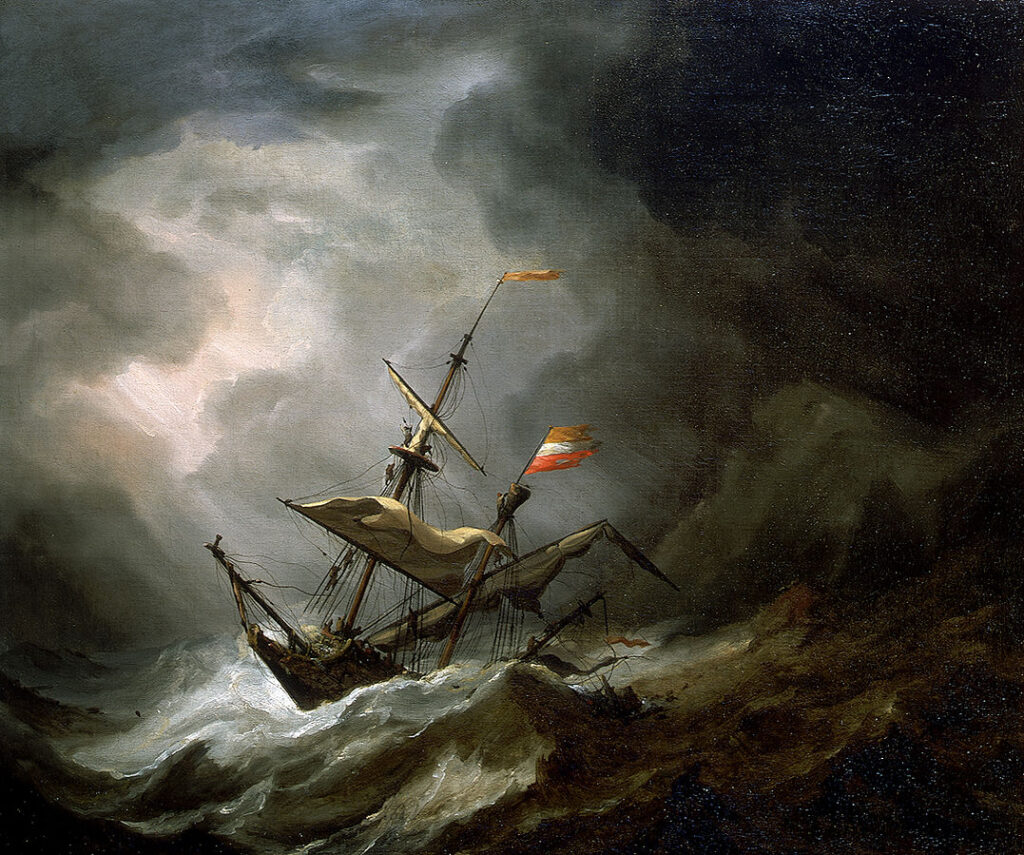
In this poem, Petrarca speaks about his struggle to get his soul on the right path, comparing this journey to a rough storm at sea. Throughout Petrarca’s work, we repeatedly see the message of trying to get his soul on the right path and not to be swayed by Earthly possessions, and instead wanting to focus on finding out the truth about life. For example, we see this in the allegorical meaning of the Ascent of Mount Ventoux, as he also describes the difficult journey he must take in order to become enlightened as to what life really has to offer.
We begin the first stanza with the line “My ship is full of forgetful cargo sails”, in which he uses the metaphor of a ship (which appears in several poems of his) to describe his soul. He then goes on to state how his ship is sailing through “rough seas at the midnight of winter between Charybdis and the Scylla reef”. Through this imagery, we get the message that the journey he must go through is arduous and dangerous. Petrarca even mentions the Scylla reef and Charybdis, which are two mythical sea monsters that are typically used to describe the hazardous conditions between Sicily and Italy.
In the second stanza, we start to see Petrarca despair at his situation. He speaks about how he dreads the storm ahead and what challenges it might bring, as well as using the imagery of his sail breaking due to “wet eternal winds of sighs, of hopes and of desires”; this line essentially describes how his own hopes and wants in life are preventing him from reaching the spiritual awakening he needs. This hopeless tone continues on in the third stanza, as he provides imagery about the stormy atmosphere, saying it’s made of “a rain of tears, a mist of my disdain”. This storm continues to destroy Petrarca’s ship as it ravages the “weary ropes made up of wrong, entwined with ignorance”.
The last stanza encompasses Petrarca’s melancholic point of view of his journey. As evident from the past three stanzas, his journey is difficult and full of obstacles, and we begin to see his hopelessness take over him. The stanza stuck out to me in particular because of the imagery he uses to describe how lost he feels while on this journey, especially when he says his skill and reason are now “dead in the waves”. This line perfectly exemplifies how feeling hopeless while on a journey, whether it’s to reach a spiritual awakening or for another cause, can make you feel as though you have no sense of reason or skill anymore, which can drive one deeper into feeling depressed and dejected. In his final line, Petrarch repeats this sentiment by saying “and I despair of ever reaching port”, where he admits that because of how difficult this journey is and his inability to think clearly, he fears that he may never reach what his ultimate goal is.
